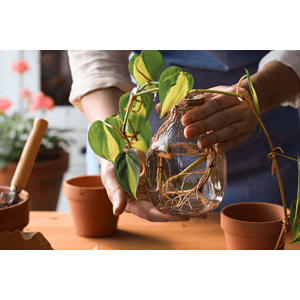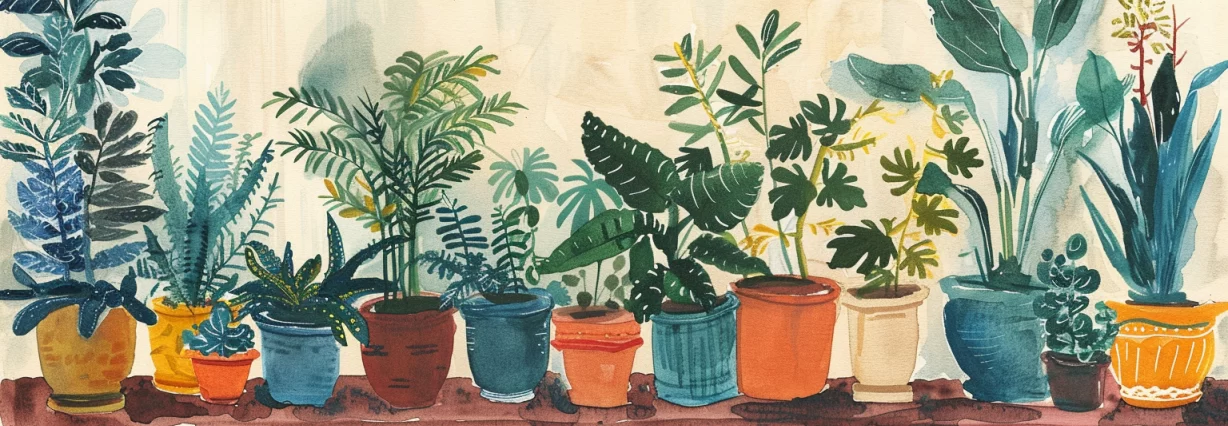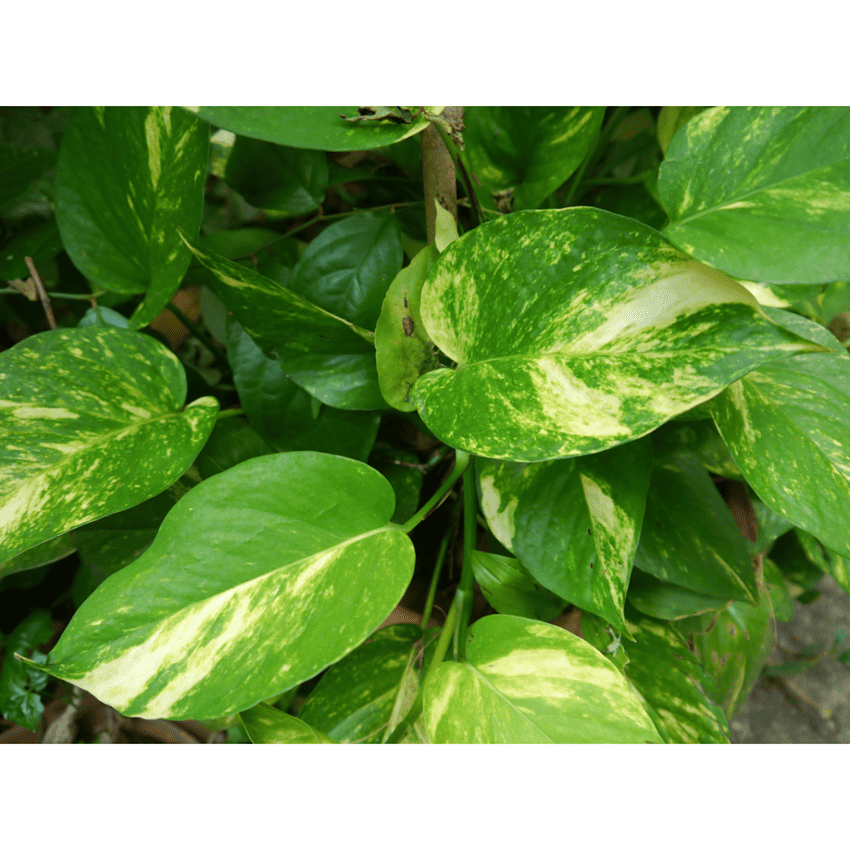Hawaiian Pothos, also known as Epipremnum pinnatum, is a popular houseplant that is native to French Polynesia. This plant is admired for its stunning variegated leaves that come in different shades of green and gold. The leaves can grow up to 12 inches long, making it a perfect choice for those looking for a statement plant to add to their home or office.
One of the reasons why Hawaiian Pothos is such a popular choice for houseplants is because it is relatively easy to care for. This plant is known for its resilience and can thrive in a variety of conditions. It can tolerate low to bright light, but it is best to avoid direct sunlight as it can scorch the leaves. Additionally, this plant can tolerate a wide range of temperatures, making it an ideal choice for those who live in areas with fluctuating temperatures.
Overall, Hawaiian Pothos is a beautiful and easy-to-care-for houseplant that is perfect for both novice and experienced plant owners. In the following sections, we will explore the different aspects of caring for this plant, including lighting, watering, and soil requirements, to ensure that your Hawaiian Pothos thrives in your home or office.
Overview
Hawaiian Pothos, also known as Epipremnum aureum Hawaiian, is a popular houseplant that is native to the Solomon Islands. It is a member of the Araceae family and is closely related to other popular houseplants such as the philodendron and the peace lily.
Description
The Hawaiian Pothos has large, glossy, heart-shaped leaves that are variegated with yellow and green stripes. The leaves can grow up to 12 inches long and 4 inches wide. The plant also produces aerial roots that can be used to anchor it to a support or absorb moisture from the air. When grown in ideal conditions, the Hawaiian Pothos can grow up to 10 feet long.
Species
The Hawaiian Pothos is a cultivar of the Epipremnum aureum species. This species is also commonly known as Devil’s Ivy or Pothos. It is a tropical vining plant that is native to the Solomon Islands and other parts of Southeast Asia. The species has been introduced to many other parts of the world and is considered an invasive species in some areas.
Growth Habit
The Hawaiian Pothos is a fast-growing plant that can thrive in a variety of light conditions. It prefers bright, indirect light but can also tolerate low light. It can grow in a variety of soil types and does not require frequent watering. The plant can be propagated by stem cuttings or by separating the plant into smaller sections.
Air Purification
Like many other houseplants, the Hawaiian Pothos is known for its air-purifying abilities. It can help to remove toxins such as formaldehyde, benzene, and trichloroethylene from the air. The plant can also help to regulate humidity levels in the home, making it a great choice for those with respiratory issues or allergies.
Overall, the Hawaiian Pothos is a beautiful and easy-to-care-for houseplant that can add a touch of tropical elegance to any home.
Care
Taking care of a Hawaiian Pothos is relatively easy and straightforward. Here are some tips to help you keep your plant healthy and thriving.
Watering
Hawaiian Pothos should be watered only when the top inch of soil is dry. Overwatering can lead to root rot, so make sure the soil is well-draining and not waterlogged. Underwatering can cause the leaves to wilt and turn yellow. When watering, make sure to water thoroughly and allow excess water to drain out of the pot.
Sunlight
Hawaiian Pothos prefers bright, indirect light. Direct sunlight can scorch the leaves, while too little light can cause the leaves to lose their variegation. Place your plant near a window that receives filtered sunlight or use a sheer curtain to filter the light.
Temperature
Hawaiian Pothos prefers temperatures between 65°F to 80°F. Avoid placing the plant in areas with extreme temperature changes, such as near drafty windows or air conditioning vents.
Humidity
Hawaiian Pothos prefers high humidity levels of up to 70%. You can increase humidity by placing a humidifier near the plant or by placing a tray of water near the plant. Misting the leaves can also help increase humidity levels.
Soil and Potting
Hawaiian Pothos prefers well-draining soil. You can use a potting mix that contains perlite, peat moss, or coco coir to improve drainage. Repot your plant every two years or when the roots start to outgrow the pot.
Fertilizer
Hawaiian Pothos should be fertilized once a month during the growing season with a balanced fertilizer. Avoid fertilizing during the winter months when the plant is dormant.
Pruning
Prune your Hawaiian Pothos to control its growth and shape. You can also propagate the plant by taking stem cuttings and rooting them in water or soil.
Propagation
Hawaiian Pothos can be propagated easily using stem cuttings. This process involves taking a healthy stem cutting from the parent plant and rooting it in water or soil until it develops roots and starts to grow.
To propagate Hawaiian Pothos, follow these steps:
- Choose a healthy stem from the parent plant that is at least 4-6 inches long and has at least two sets of leaves.
- Using a clean, sharp pair of scissors or pruning shears, cut the stem just below a node (the point where a leaf meets the stem).
- Remove the leaves from the bottom 1-2 inches of the stem, leaving only the top leaves intact.
- If rooting in water, place the stem cutting in a jar or vase filled with clean, room temperature water. Change the water every few days to keep it fresh. If rooting in soil, insert the stem cutting into a pot filled with moist potting soil.
- Place the jar or pot in a warm, bright location, but out of direct sunlight.
- Wait for the roots to develop. This can take several weeks. Once the roots are at least an inch long, the cutting can be transplanted into a larger pot with fresh potting soil.

It’s important to note that Hawaiian Pothos should be propagated during the spring or summer months when the plant is actively growing. Propagating during the fall or winter is less likely to be successful, and it may be harder for the mother plant to recover from having stem cuttings taken during these months.
Overall, propagation is a great way to multiply your Hawaiian Pothos collection with minimal effort and even share it with friends and family.
Common Problems
Hawaiian pothos is a relatively easy plant to care for, but it is not immune to problems. Here are some common issues that you may encounter while growing Hawaiian pothos.
Pests
The Hawaiian pothos is generally resistant to pests. However, mealybugs, spider mites, and scale insects can still infest the plant. Here are some signs of pest infestation:
- Sticky residue on the leaves
- Yellowing or wilting leaves
- Small webs or cotton-like clusters on the leaves
To get rid of pests, you can use a mild insecticidal soap or neem oil. Be sure to follow the manufacturer’s instructions and apply the solution to all parts of the plant.
Diseases
Hawaiian pothos is susceptible to root rot, which is caused by overwatering. Symptoms of root rot include yellowing leaves, wilting, and a foul smell from the soil. To prevent root rot, make sure the soil is well-draining and the plant is not sitting in water.
Another disease that can affect Hawaiian pothos is leaf spot, which is caused by a fungal infection. Symptoms of leaf spot include brown or black spots on the leaves. To treat leaf spot, remove the affected leaves and avoid getting water on the leaves.
Toxicity
Hawaiian pothos is toxic to pets and humans if ingested. The plant contains calcium oxalate crystals, which can cause mouth and throat irritation, difficulty swallowing, and vomiting. Keep the plant out of reach of children and pets, and wash your hands after handling the plant.
Growing Tips
Container and Potting Mix
When it comes to growing Hawaiian Pothos, the right container and potting mix are crucial. As a rule of thumb, you should choose a container that is slightly larger than the plant’s root ball. This will give the roots enough room to grow and prevent them from becoming root-bound.
For the potting mix, you should aim for a well-draining mix that is rich in organic matter. A mix of peat moss, perlite, and vermiculite is an excellent choice. You can also add some slow-release fertilizer to the mix to give your plant a nutrient boost.
Light Levels
Hawaiian Pothos can tolerate a wide range of light levels, but they thrive in bright, indirect light. Direct sunlight can scorch the leaves, so it’s best to keep your plant away from the windowsill. If you don’t have a bright spot in your home, you can use artificial lights to provide your plant with the right amount of light.
If you notice that your plant’s leaves are turning yellow or brown, it may be a sign that your plant is not getting enough light. On the other hand, if the leaves are turning pale, it may be a sign that your plant is getting too much light.
In conclusion, growing Hawaiian Pothos is relatively easy as long as you provide the right conditions. By choosing the right container and potting mix and providing the right amount of light, you can ensure that your plant thrives and adds a touch of tropical beauty to your home.
Frequently Asked Questions
Can Hawaiian pothos be grown indoors?
Yes, Hawaiian pothos can be grown indoors as they thrive in low to bright light conditions. They are an excellent choice for indoor gardening and can be grown in a variety of containers such as pots, hanging baskets, or even in water.
What is the ideal temperature range for Hawaiian pothos?
Hawaiian pothos can tolerate a wide range of temperatures, but they prefer temperatures between 65-85°F (18-29°C). They can be sensitive to cold drafts, so it’s best to keep them away from windows and doors during the winter months.
Do Hawaiian pothos plants need to be watered frequently?
Hawaiian pothos prefer to be kept moist but not waterlogged. They should be watered thoroughly when the top inch of soil is dry to the touch. It’s important not to let the soil dry out completely, as this can cause stress to the plant.
Are Hawaiian pothos plants toxic to pets?
Yes, Hawaiian pothos are toxic to pets and should be kept out of reach. The plant contains calcium oxalate crystals, which can cause irritation and swelling of the mouth and throat if ingested.
How often should Hawaiian pothos be fertilized?
Hawaiian pothos should be fertilized every 2-4 weeks during the growing season (spring and summer) with a balanced fertilizer. It’s important not to over-fertilize, as this can cause damage to the plant.
What is the best soil for Hawaiian pothos?
Hawaiian pothos prefer well-draining soil that is rich in organic matter. A good potting mix should include peat moss, perlite, and vermiculite. It’s also important to ensure that the soil pH is between 6.0-7.0 for optimal growth.


